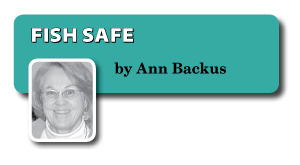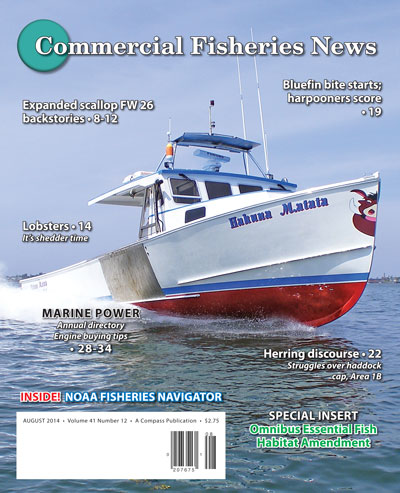The Maine Lobster Apprenticeship Program is the first of its kind in the US that requires not only hours of apprenticeship but also the successful completion of a US Coast Guard Fishing Vessel Safety Drill Conductor Course, according to the Maine Department of Marine Resources (DMR), which administers the program.
 This was not always so. The initial apprenticeship program, which began in 1998, basically required 1,000 hours of apprenticeship and 200 days of fishing over a minimum of 24 months. The impetus for adding the safety training came from the Maine Commercial Fishing Safety Advisory Council.
This was not always so. The initial apprenticeship program, which began in 1998, basically required 1,000 hours of apprenticeship and 200 days of fishing over a minimum of 24 months. The impetus for adding the safety training came from the Maine Commercial Fishing Safety Advisory Council.
The Coast Guard currently requires all documented commercial fishing vessels of any length or crew size that fishes beyond the “Boundary Line” to carry out monthly safety drills. An individual who has completed the drill conductor course must conduct these drills.
The course, which safety experts describe as “training the trainer,” consists of instruction in safety education, responding to vessel and crew emergencies, and how to go about conducting a whole range of drills, including: abandoning ship; firefighting; retrieving a man overboard; minimizing flooding; launching the life raft; donning immersion suits; igniting flares; calling in emergencies on the radio; and activating the general alarm.
Thus, Maine lobster apprentices receive the most thorough training required by law in the US commercial fishing industry.
As part of a 2007-2009 Maine Sea Grant-funded study that I conducted with Mary Davis in collaboration with the Maine Marine Patrol, we collected survey data from 259 captains.
We found that 78% of the captains had never taken a drill conductor course. In addition: 76% had not had coldwater survival training; 66% had not been trained in operating a life raft; and 59% had not participated in survival suit training.
At the conclusion of their apprenticeships, Maine lobster apprentices – 100% of them – will be able to answer “yes” to having had these trainings. As a result, a whole new safety-trained cohort of fishermen is being licensed to work on the water in Maine.
However, conversion of these apprentice licenses to full commercial licenses is not necessarily immediate or even assured. Six of Maine’s seven Lobster Zones have limited entry and exit/entry ratios, which result in apprentices who have completed the requirements not being able to immediately purchase a commercial license if they designate a closed zone as where they plan to fish a majority of their traps. Apprentice applicants go onto a “wait list” for all zones except Zone C, which remains open to entry.
According to the DMR website, the wait list in January 2013 included 314 persons who had Coast Guard training, and the zone-specific number of qualified fishermen on the wait lists ranged from 26 in Zone E to 61 in Zone A.
The calculation of how many people can come off the wait list in each zone is based on the number of fishermen retiring their licenses and the number of lobster tags they relinquish. In Zone A, the ratio is 1:3 – one new entrant is permitted for every three who retire their licenses. For Zones B, D, E, F, and G, the ratio is 1:5.
Regardless of your license status, enrolling in and successfully completing a Fishing Vessel Safety Drill Conductor Course is a wise thing to do to comply with Coast Guard regulations and ensure that you’re prepared for emergencies, as well as properly trained and qualified to teach others how to be safe at sea.
Ann Backus, MS, is the director of outreach for the Harvard School of Public Health’s Department of Environmental Health in Boston, MA. She may be reached by phone at (617) 432-3327 or by e-mail at <abackus@hsph.harvard.edu>.
<< BACK TO FISHING VESSEL SAFETY PAGE
Get the rest and much, much more in the August issue of Commercial Fisheries News.
Read online immediately and download for future reference.








 Updating...
Updating...